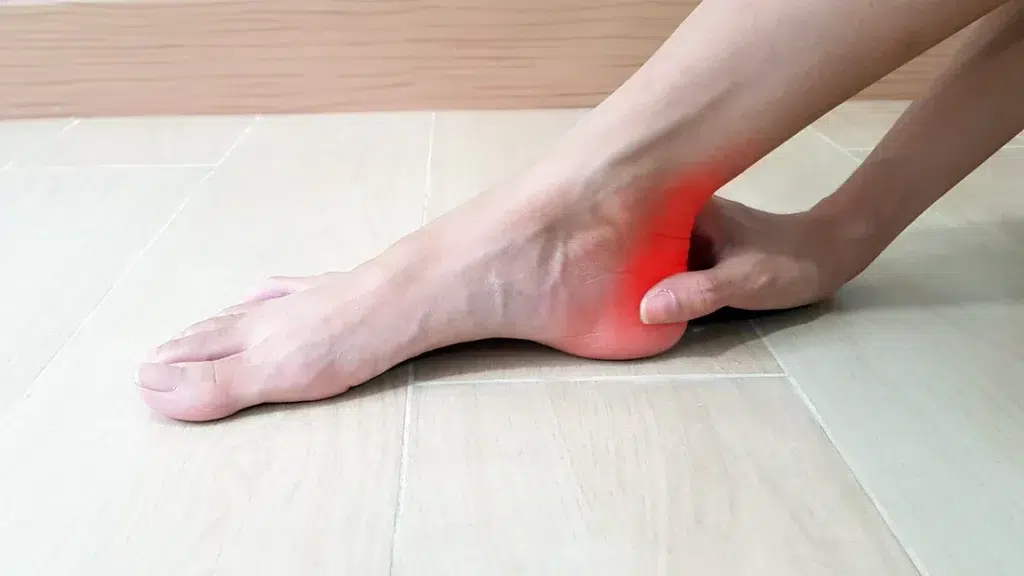Pain and Swelling in the Back of the Ankle from Tendon Inflammation
What Is Achilles Tendinitis?
Achilles tendinitis is the inflammation or irritation of the Achilles tendon — the thick cord that connects your calf muscles to your heel. Unlike a rupture, which is an acute injury, tendinitis typically develops over time due to repetitive stress or overuse. It can affect athletes, especially runners, but also individuals who suddenly increase their activity levels or wear improper footwear.
There are two types:
- Non-insertional tendinitis affects the middle portion of the tendon.
- Insertional tendinitis affects the lower portion of the tendon where it attaches to the heel bone.
Causes and Risk Factors
- Overuse from running or high-impact sports
- Sudden increase in physical activity
- Tight calf muscles or lack of proper stretching
- Inadequate footwear or worn-out shoes
- Foot abnormalities (e.g., flat feet)
- Age-related tendon degeneration
- Improper training surfaces (e.g., hills, hard pavement)
Symptoms
- Gradual onset of pain and stiffness along the Achilles tendon
- Morning stiffness or pain after periods of inactivity
- Swelling or thickening of the tendon
- Tenderness to touch or when stretching
- Pain that worsens with prolonged activity
- Insertional tendinitis may include pain at the back of the heel and bony spurs
Diagnosis
- Physical examination to assess tenderness, swelling, and range of motion
- Ultrasound or MRI to confirm inflammation or detect tendon degeneration
- X-ray may help evaluate for calcifications or heel bone spurs
Treatment
Non-Surgical Treatment
- Rest and activity modification
- Ice application to reduce inflammation
- Anti-inflammatory medications (NSAIDs)
- Stretching and eccentric strengthening exercises
- Heel lifts or orthotic inserts
- Immobilization in more severe cases
- Physical therapy focused on calf flexibility and gradual tendon loading
Surgical Treatment
- Reserved for chronic cases that do not improve with conservative care (typically after 6 months)
- Debridement of degenerated tendon tissue
- Removal of bone spurs in insertional cases
- Tendon transfer in severe or recurrent cases
Recovery Timeline
- Most patients improve significantly with 6–12 weeks of non-surgical care
- Post-surgical recovery may take 3–6 months, with progressive rehab
- Early and consistent therapy improves long-term outcomes and reduces recurrence
Expert Treatment at Kerlan Jobe Institute
At Kerlan Jobe Institute, our foot and ankle specialists customize treatment plans for Achilles tendinitis based on your activity level, tendon condition, and long-term goals. We combine cutting-edge care with proven rehab strategies to help you return to a pain-free, active lifestyle.

